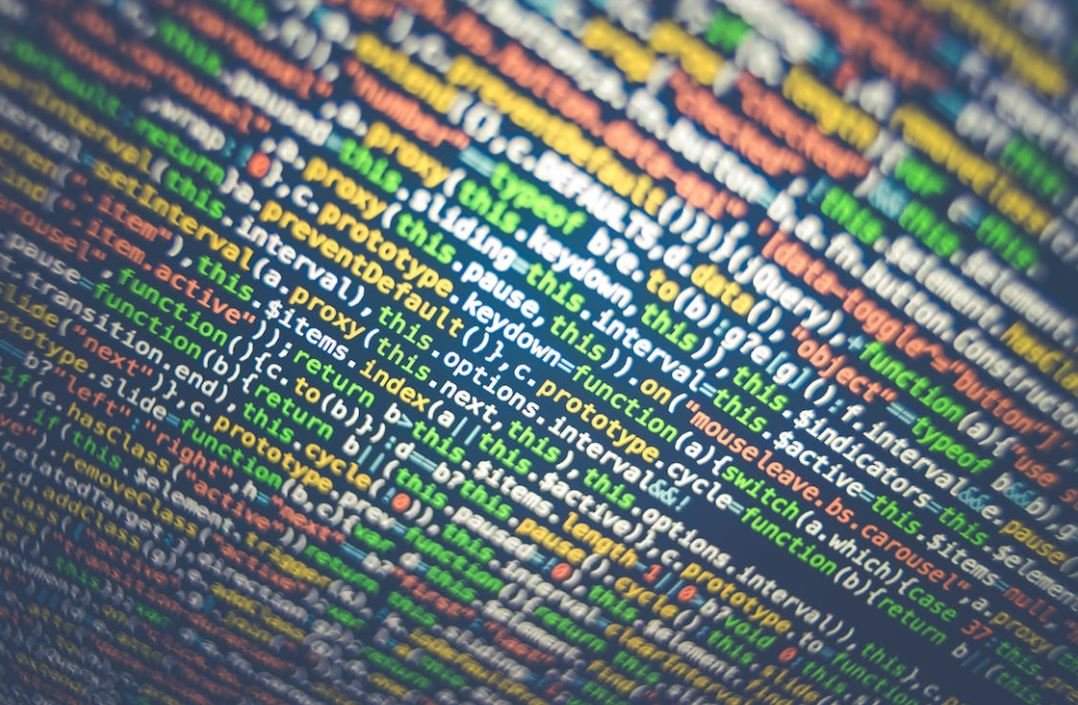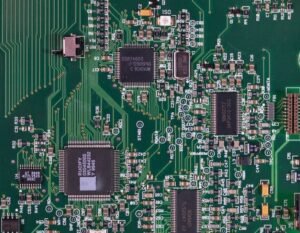Why Neural Network is Used
Neural networks, also known as artificial neural networks or ANNs, are computational models inspired by the human brain. These networks are composed of interconnected nodes, called artificial neurons, which organize and process information. Neural networks have gained significant popularity in various fields due to their ability to analyze complex data, recognize patterns, make predictions, and solve challenging problems.
Key Takeaways
- Neural networks mimic the structure and functionality of the human brain.
- They are used for complex data analysis, pattern recognition, and prediction.
- Neural networks have applications in a wide range of fields, including healthcare, finance, and robotics.
- Training a neural network involves feeding it with labeled data to optimize its performance.
- Deep learning is a subset of neural networks that enables complex hierarchical learning.
Neural networks are capable of understanding and processing data in a way that mimics human intelligence. These networks consist of interconnected layers of artificial neurons, each performing calculations and transforming the input into a meaningful output. *Neural networks are particularly useful when dealing with complex, non-linear relationships and large amounts of data.* This makes them valuable in various domains such as image and speech recognition, natural language processing, and anomaly detection.
One intriguing aspect of neural networks is their ability to learn from examples. Through a process known as training, a neural network can improve its performance by adjusting the strength of connections between neurons based on labelled input data. *The more training data a neural network receives, the more accurate its predictions become.* This adaptability is a significant advantage, as neural networks can continuously learn from new information and refine their algorithms over time.
Applications of Neural Networks
Neural networks find their applications in various fields, contributing to advancements in technology and research. Here are some notable areas where neural networks are used:
- Healthcare: Neural networks aid in medical diagnosis, analyzing patient data, and predicting outcomes of treatments.
- Finance: They are used for stock market forecasting, fraud detection, and credit risk assessment.
- Robotics: Neural networks enable robots to perceive their environment, make decisions, and perform complex tasks.
Neural Networks vs. Traditional Programming
Neural networks differ from traditional programming approaches, as they learn from data rather than being explicitly programmed. Instead of relying on predefined rules or logic, neural networks can automatically learn and adapt to new information. This flexibility makes them highly effective for tasks that involve uncertainty and complexity, where explicit programming is often impractical or time-consuming. *Neural networks excel at identifying complex patterns and making accurate predictions without explicit programming rules.*
Deep Learning and Neural Networks
Deep learning is a subset of neural networks that attempts to emulate the way the human brain learns and processes information. It involves networks with multiple interconnected layers, where each layer gradually extracts higher-level and more abstract representations of the input data. *Deep learning has revolutionized fields such as computer vision, natural language processing, and speech recognition by significantly improving the accuracy and performance of neural networks.*
Types of Neural Networks
There are various types of neural networks, each designed for specific applications and data characteristics. Here are a few examples:
| Type | Description |
|---|---|
| Feedforward Neural Network | The inputs flow only in one direction, from the input layer to the output layer. |
| Recurrent Neural Network | These networks have loops that allow information to persist, making them suitable for sequential data and time series analysis. |
| Convolutional Neural Network | These networks are primarily used for image and video processing tasks, where they can effectively extract features and learn spatial hierarchies. |
Conclusion
Neural networks, inspired by the human brain, have become a powerful tool for analyzing complex data, recognizing patterns, making predictions, and solving challenging problems. Their ability to learn and adapt from data makes them valuable across various industries, including healthcare, finance, and robotics. With continued advancements in deep learning and the development of specialized neural network architectures, the potential applications of neural networks are boundless.

Common Misconceptions
Neural Networks are Only Used in Artificial Intelligence
One common misconception about neural networks is that they are only used in the field of artificial intelligence. While it is true that neural networks play a significant role in AI applications such as image recognition and natural language processing, they are not limited to this field alone.
- Neural networks have applications in various industries such as finance, healthcare, and marketing.
- They are used for tasks like fraud detection, predicting stock market trends, and customer behavior analysis.
- Neural networks can also be utilized in robotics, virtual reality, and gaming industries.
Neural Networks are Only Used for Complex Problems
Another misconception is that neural networks are only suitable for solving complex problems. While they excel in handling intricate tasks, they are also capable of solving simpler problems efficiently.
- Neural networks can be applied to tasks like spam filtering and sentiment analysis, which are relatively straightforward.
- They can be used for basic image recognition tasks, such as classifying objects or detecting patterns in images.
- Neural networks are also utilized in speech recognition systems, which require both complex algorithms and simpler audio signal processing.
Neural Networks Always Provide Accurate Results
One of the common misconceptions about neural networks is that they always provide accurate and precise results. However, like any other machine learning model, neural networks are prone to errors and limitations.
- No model is perfect, and neural networks can make mistakes or misinterpret patterns in the data.
- Neural networks are sensitive to the quality and quantity of training data they receive, and inadequate or biased data can lead to inaccurate results.
- The complexity of neural networks can sometimes lead to overfitting, where the model performs well on the training data but fails to generalize on unseen data.
Training a Neural Network is Quick and Easy
There is a misconception that training a neural network is a quick and easy process. While neural networks can certainly be powerful tools, training them is a time-consuming and resource-intensive task.
- Training a neural network often requires substantial amounts of labeled data for accurate learning.
- The training process involves several iterations and adjustments to optimize the model’s performance, which can be time-consuming.
- Neural networks might require significant computational power and specialized hardware, especially for training large-scale models.
Neural Networks Function Like the Human Brain
A common misconception is that neural networks function exactly like the human brain. While they are inspired by the biological neurons in our brains, they differ significantly in their functioning and capabilities.
- Neural networks are a simplified mathematical model of the brain, using artificial neurons to process information.
- They lack the complexity and parallel processing capabilities of the human brain.
- Unlike human brains, neural networks do not possess consciousness, emotions, or self-awareness.

Why Neural Network is Used
Neural networks are a powerful tool in the field of artificial intelligence. They are designed to mimic the functioning of the human brain and have found applications in various domains. The following tables provide interesting insights into the reasons why neural networks are widely used and their impact on different industries and technologies.
| Industry | Applications | Benefits | |
|---|---|---|---|
 |
Finance | Stock market prediction | Improved investment strategies |
 |
Healthcare | Disease diagnosis | Early detection and improved patient care |
 |
Transportation | Autonomous vehicles | Enhanced safety and efficiency |
Table: Impact of Neural Networks in Different Industries. Neural networks have revolutionized many industries, such as finance, healthcare, and transportation. They have enabled accurate stock market predictions, early disease diagnosis, and the development of autonomous vehicles. This technology offers numerous benefits, including improved investment strategies, better patient care, enhanced safety, and increased efficiency in transportation systems.
| Technology | Applications | Advantages | |
|---|---|---|---|
 |
Computer Vision | Object recognition | Improved image classification |
 |
Natural Language Processing | Language translation | Accurate and rapid translation |
 |
Robotics | Path planning | Precise and efficient movement |
Table: Applications of Neural Networks in Various Technologies. Neural networks have made significant contributions to different technological fields. Computer vision applications benefit from enhanced object recognition capabilities, while natural language processing benefits from accurate and rapid language translation. In robotics, neural networks enable precise and efficient path planning for robots.
| Research Area | Applications | Results | |
|---|---|---|---|
 |
Astronomy | Galaxy classification | Improved understanding of the universe |
 |
Climate Science | Weather prediction | More accurate forecasting models |
 |
Drug Discovery | Drug design | Accelerated drug development process |
Table: Impact of Neural Networks in Research Fields. Neural networks have made significant contributions to different research areas. In astronomy, they have improved our understanding of the universe through more accurate galaxy classification. In climate science, neural networks assist in weather prediction, enabling more precise forecasting models. In drug discovery, they accelerate the drug development process by aiding in drug design.
In essence, neural networks have transformed industries, technologies, and research. Their ability to process large amounts of data, identify complex patterns, and make accurate predictions has revolutionized decision-making processes. The versatility of neural networks allows their widespread usage across diverse domains, leading to advancements in finance, healthcare, transportation, technology, research, and more. As the field of artificial intelligence continues to evolve, neural networks will undoubtedly play a crucial role in shaping the future.
Frequently Asked Questions
Why is Neural Network Used?
Neural networks are used to solve complex problems and perform tasks that are difficult for traditional algorithms. They are particularly effective in tasks involving pattern recognition, classification, and prediction.
What are the Advantages of Neural Networks?
Neural networks have several advantages. They can learn from large amounts of data and generalize well to unseen examples. They are robust to noise and can handle complex data structures. They are also capable of parallel processing, enabling them to handle large-scale computations efficiently.
How Does a Neural Network Work?
A neural network consists of layers of interconnected artificial neurons or nodes. These nodes apply mathematical operations to inputs and produce outputs. The network learns by adjusting the connection weights based on the input and desired output. Through a process called backpropagation, the network minimizes the difference between the predicted output and the desired output.
What Types of Neural Networks Exist?
There are various types of neural networks, including feedforward neural networks, recurrent neural networks, convolutional neural networks, and self-organizing maps. Each type is suited for specific tasks and has its own unique architecture and learning algorithm.
What Are Some Real-World Applications of Neural Networks?
Neural networks have found applications in diverse fields. They are used in image and speech recognition systems, natural language processing, recommendation systems, financial forecasting, medical diagnosis, autonomous vehicles, and many other areas where pattern recognition or prediction is required.
Are Neural Networks Used in Deep Learning?
Yes, neural networks form the basis of deep learning. Deep learning is a subfield of machine learning that utilizes neural networks with multiple hidden layers. These deeper architectures enable the network to learn more complex representations and extract higher-level features from the input data, leading to better performance in tasks such as image classification and speech recognition.
What Are the Limitations of Neural Networks?
Although powerful, neural networks have certain limitations. They require a large amount of labeled training data to perform well, and the training process can be computationally intensive and time-consuming. Neural networks are also considered as black boxes, making it challenging to interpret their decision-making process.
Can Neural Networks Replace Human Experts?
Neural networks are powerful tools that can automate complex tasks, but they are not meant to replace human experts. They complement human expertise by performing repetitive tasks efficiently and providing insights that humans may miss. Ultimately, human judgment and expertise are still essential in interpreting and making decisions based on the results obtained from neural networks.
What Are the Future Directions of Neural Network Research?
Neural network research is a vibrant field, and several areas are currently being explored. Some of the future directions include improving the interpretability and explainability of neural networks, enhancing their ability to handle small and noisy data, exploring novel network architectures, and investigating ethical considerations surrounding the use of neural networks.
How Can I Learn More About Neural Networks?
There are numerous resources available to learn about neural networks. Online courses, tutorials, and textbooks provide comprehensive introductions and in-depth knowledge. Additionally, research papers, conferences, and forums allow individuals to stay up-to-date with the latest advancements in the field of neural networks.




